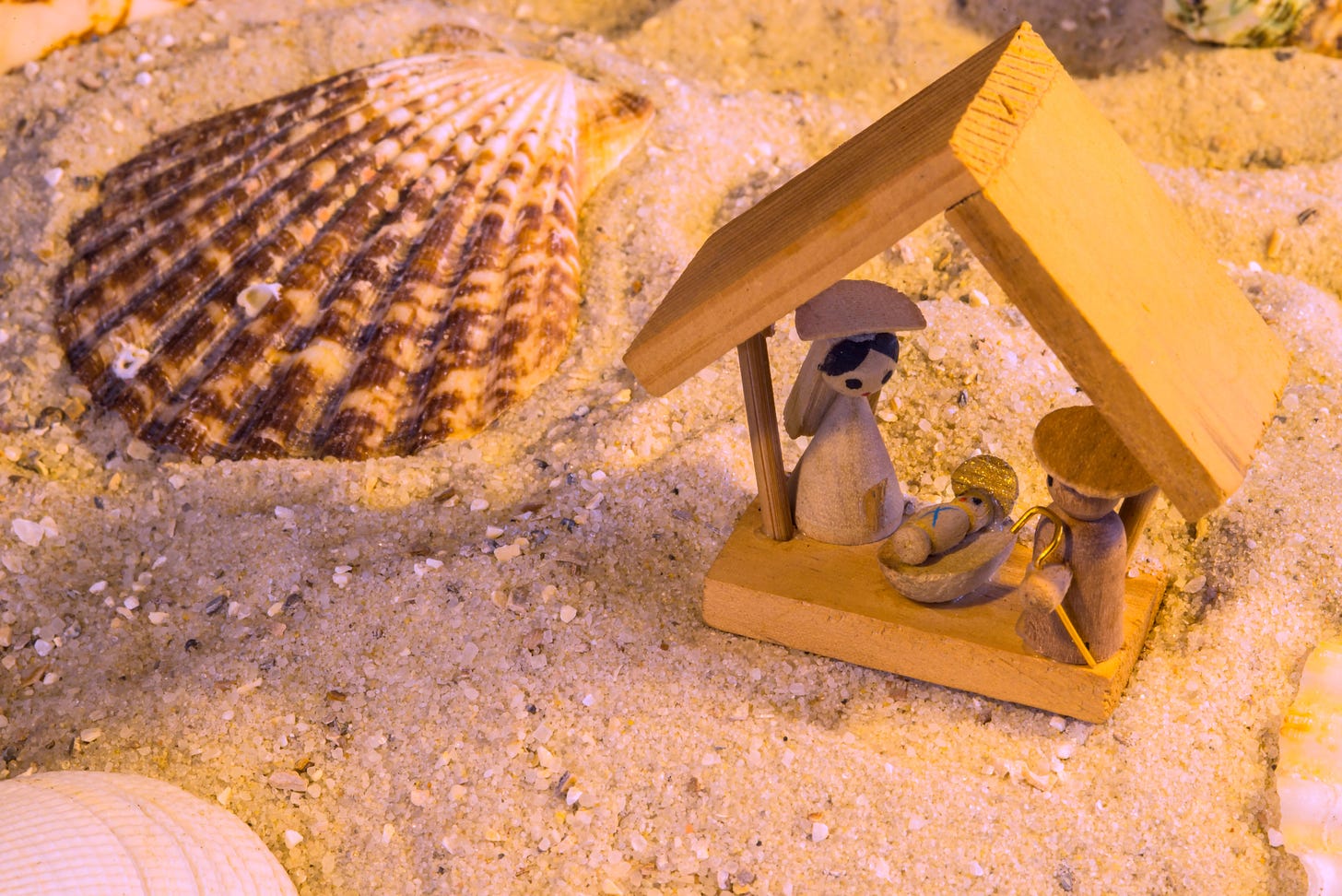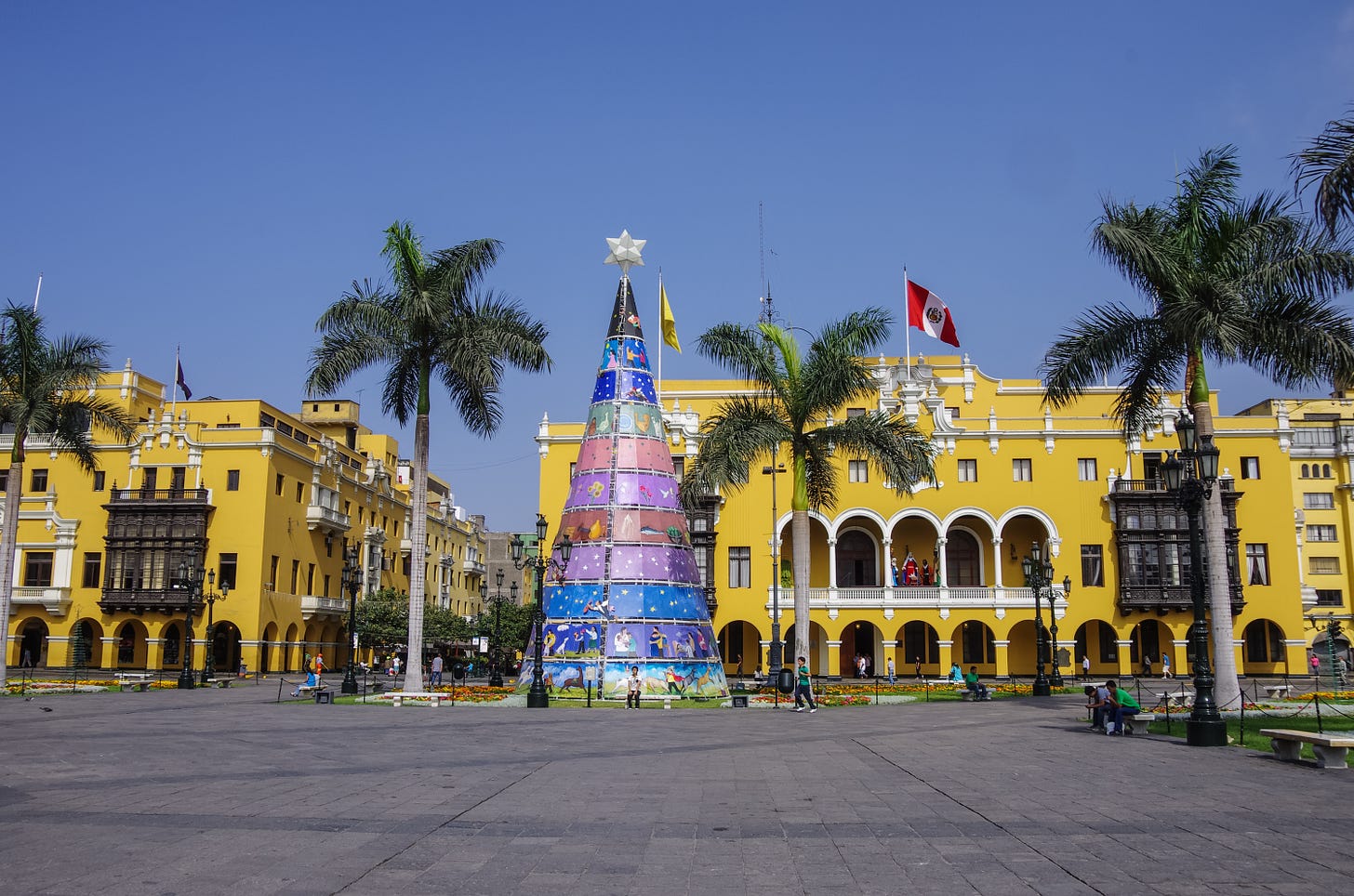Bishop Richard Umbers has fond memories of the Advent season from growing up in New Zealand. He remembers holding candles and singing carols in his school auditorium. It was an exciting time of year for him and his classmates – not only was Christmas near, but also their three-month summer break.
On Dec. 25, young Richard enjoyed going to the beach or the public pools. Now as an auxiliary bishop of the Archdiocese of Sydney, Australia, his experience of Christmas Day “is almost always hot, and the clergy will certainly feel the heat in their vestments.”
Christmas in summer may seem strange to many in the Northern Hemisphere. But the southern half of the globe is home to a sizable number of Catholics, despite housing only about 12% of the world’s total population. The Church’s holy days land on the same dates there as in the North, but with inverted seasons. And this divergence can affect the way the global South experiences and thinks about the Church Year.
Msgr. Joseph Hirsch of the Diocese of La Crosse, Wisconsin is well acquainted with liturgical life in the Southern Hemisphere. He has served in Lima, Peru since 2013 as executive director of Casa Hogar Juan Pablo II, a home for orphaned and neglected children founded by another priest of his diocese, Servant of God Joseph Walijewski.
Although he has been in Lima for nearly a decade, Hirsch told The Pillar that some aspects of Christmas in summer are still a little jarring. Situated on the Pacific coast beside the Andes Mountains, Lima has virtually no rainfall year-round and never any snow. Yet sights of ‘the North Pole’ still appear.
“The strangest for me is Christmas when I see children’s celebrations, and they have Santa Claus and elves and snowmen pictures. The people who dress up in Santa Claus suits almost die of heat stroke because it is the middle of summer.”
During Advent, Hirsch said he explains the idea of the winter solstice to the local children, even though Lima is experiencing its summer solstice – the longest day of the year – just before Christmas.
On the opposite end of the continent, about 300 miles east off the coast of Argentina, the Falkland Islands are home to a single Catholic church. This small pro-cathedral named St. Mary’s has been shepherded by Fr. Ambrose Bennett, O.S.B. since 2019.
As a British overseas territory in the care of the Bishops’ Conference of England and Wales, Bennett says, “We celebrate Christmas here just as we would in England…The only difference is that the Christmas lights outside are not turned on ’til later.”
But Bennett does not find it unfitting to celebrate Christmas amid his locale’s abundant natural light.
“In symbolic terms, I think of the long days as a sign of the victory of the light of Christ: ‘The light shines in the darkness, and the darkness has not overcome it’,” he reflected.
Although it is summer at Christmastime, it can still be chilly, he added.
“I have experienced winter Christmases in the American Southwest that were warmer than the summer Christmases I have experienced in the Falklands.”
Christmas is not the only liturgical celebration that is affected by the seasonal differences in the Southern Hemisphere. Easter – the highest solemnity on the Church calendar – falls each year between March 22 and April 25. The feast is connected with the Jewish Passover in Israel, which takes place in the spring. This correlates with early fall in the Southern Hemisphere.
To Bennett, the seasonal differences between the two hemispheres at Easter are less drastic than those at Christmas.
“The light and temperature roughly correspond to those of the spring, so it does not feel so very different,” he said.
He added that mid-March is the end of the sheep-shearing season in the Falklands, which fits in thematically with the idea of Christ as the Passover lamb during Triduum.
Due to the interplay of geography and history, the average Catholic in the Northern Hemisphere lives further away from the equator than his average Southern counterpart. For example, the 41° North latitudes of Rome, Chicago, and Istanbul mirror that of the world’s southernmost national capital, Wellington, New Zealand at 41° South. Living closer to our planet’s poles heightens seasonal changes in daylight, while living closer to the Equator reduces this seasonal variation.
So in equatorial-adjacent Peru, Hirsch says, “We don’t relate Easter to the rotating seasons of nature. We celebrate it as the rotation of the life of Jesus. We begin in Advent and then move to his adult ministry, and then to the Passion and Resurrection, and then being able to live this out in our Ordinary Time the rest of the year.”
Other liturgical seasons and feasts are also viewed differently in the Southern Hemisphere. In the north, the springtime month of May is celebrated as Mary’s month, while the reflections on death that accompany All Saints’ Day and All Souls’ Day come as the shadows lengthen and the days grow shorter each fall. These are flipped in the southern half of the world.
Hirsch noted that in Spanish, “Mayo (May) and Mary sound the same… so again our reference is not to nature and the seasons, but to tradition and Fatima,” which is annually celebrated on May 13.
And Bennett maintains that “it is not unfitting” that the holy dead would be celebrated in the springtime.
“After all, the original All Saints’ Day was actually on the 13th of May, instituted in connection with the consecration of the Pantheon as a Christian church,” he said. “A springtime celebration of the Communion of Saints is fitting, too, as the fruition of the Resurrection in eternal life for redeemed humanity.”
In the Falkland Islands, where an outdoor Corpus Christi procession can sometimes be prevented by heavy snow and ice, Bennett explains the meaning of mid-year feasts differently than he would in London.
“I preach on devotion to the Sacred Heart in June and to the Precious Blood in July. In the winter when we feel chilled, the Heart of Christ is the ‘burning furnace of charity,’ as the Litany says; and the Precious Blood gives us a transfusion of life-giving blood,” he said.
“I think the liturgical symbols, and their connection to the seasons and calendar year, are actually polyvalent and capable of reinterpretation. Also, since the Incarnation happened in a particular place in the Northern Hemisphere, it is fitting that the connection remains with the times and seasons of that part of the world.”
But while differences in climate and season may affect the way Catholics in different parts of the world think about the liturgical calendar, the essence of the liturgy remains unchanged.
“To be honest I just think the language is the big difference. I have been at some Masses in the USA, and I couldn’t see big liturgical differences,” says Alejandra Tambaré Hurtado, a mother of three young children in Bolivia’s largest city, Santa Cruz de la Sierra. She and her husband, Glenn, lead an organization supporting married couples called Milagro de Cana (“Cana´s Miracle”).
“We celebrate Christmas just as St. Francis of Assisi did,” she told The Pillar. Each year, her family prepares a Christmas tree and a manger scene called a Belén and attend Christmas Eve Mass together—bringing along their household’s Baby Jesus to be blessed like most families there do.
“Then we share the dinner and we wait until midnight to share gifts. At midnight, many families make fireworks illuminate the sky… always a big show. Midnight is also the moment we put the Baby Jesus image in the Belén. The fireworks are not directly associated with the light of Christ but are a very special family moment.”
Join Our Telegram Group : Salvation & Prosperity











